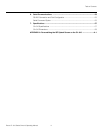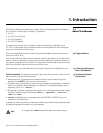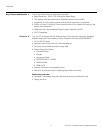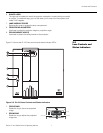
Introduction
Runco CL-610 Series Owner’s Operating Manual 3
PRE
L
IMINAR
Y
1.3
Description, Features
and Benefits
The CL-610 Series DLP Projectors offer the astounding picture quality and versatility
heretofore associated with more expensive projectors. Their 1280 x 720 native resolution
DLP light engine incorporates all-new technology for bright, pristine high-definition
images.
With throw distances of 1.37 – 1.82:1 on the CL-610 and 1.87 – 2.47:1 on the
longer-throw CL-610LT, both units offer the performance and installation flexibility custom
home theater enthusiasts have come to expect from Runco — all at a superb price and
packaged with outstanding build quality.
Advanced Runco Vivix™ digital video processing is engineered into these all-new
projection systems to achieve improved image quality even from standard video sources,
in addition to artifact-free scaling of higher resolution formats.
The CL-610's illumination system incorporates Runco's exclusive Selectable Lamp
Intensity Control™ (SLIC™), which provides two light intensity levels to allow maximum
flexibility for screen size, ambient light conditions, brightness and contrast balance, and
lamp life preservation. It also has a newly-refined cooling system, which increases
efficiency and reduces noise levels.
The CL-610 has been engineered to comply with Imaging Science Foundation™ (ISF)
standards for maximum home theater image quality. Runco's sophisticated parameters
for white balance and color gamut control have also been implemented for precise
balance of gray scale and color.
For uncompromising widescreen reproduction of movies originally filmed in the “scope”
(2.35:1) format, the CL-610 can be equipped with Runco’s patent-pending CineWide™
technology, a combination of software, electronics and high-quality anamorphic optics.
CineWide maintains constant vertical height on the screen just as in a movie theater.
When a viewer transitions from 1.78:1 (16:9) program material to 2.35:1, the image simply
gets wider while full height is maintained.
Discrete IR and RS-232 control make custom installation seamless, while discrete source
and aspect ratio selection accommodate any automation control system.
CineWide requires the use of a 2.35:1 or similar aspect ratio superwide
format screen.
Note


















